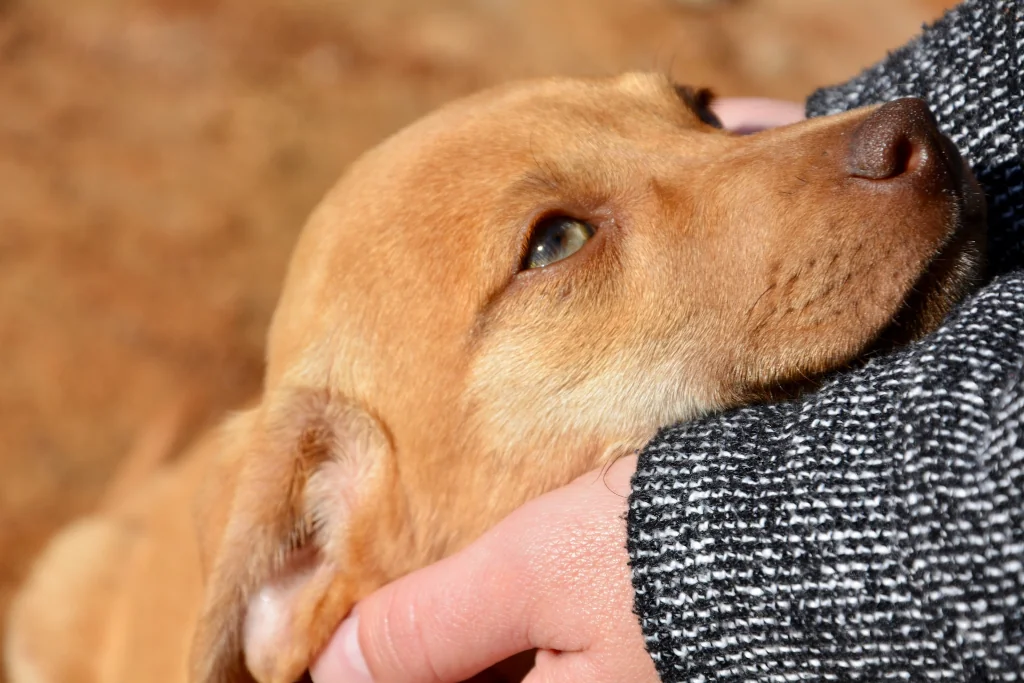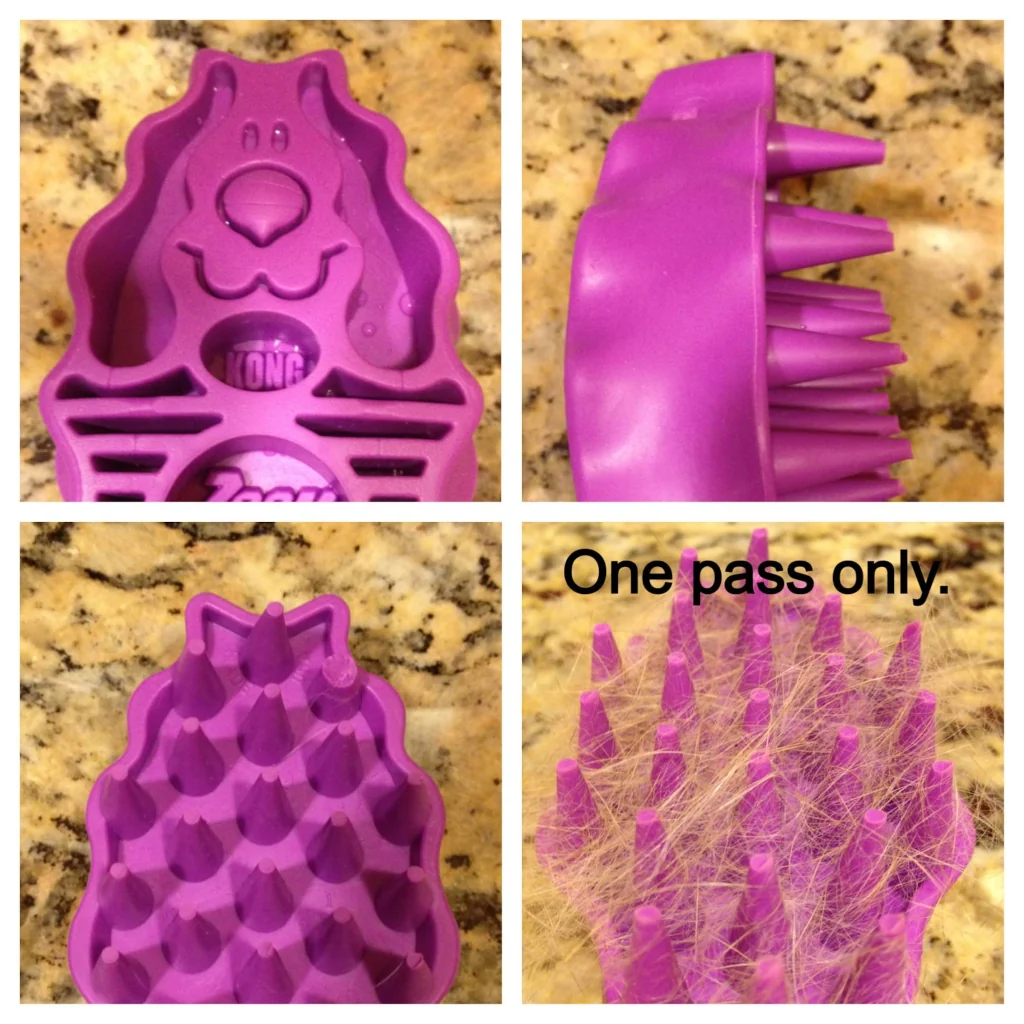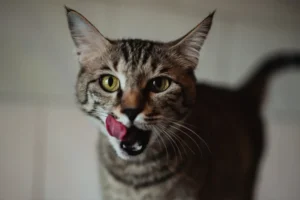Disclosure: We may earn a commission from helpful, relevant links in our content. No cost to you. See our privacy policy.
Every wag of a tail, every sparkle in those loyal eyes—it all starts with the right brush.
And let’s be honest, choosing the perfect grooming tool for your four-legged friend can feel like more than just a brush with destiny!
Whether it’s dander or detangling, wet fur or whimsical styles, the world of canine grooming can be overwhelming. But you’ve just stumbled upon a guide that’s tailored for you and your pup. Let’s unravel the art of brushing together, exploring the types of brushes, their uses, and what’s best for you and your pup.

Types of Dog Brushes and Their Purpose
Whether your pup has waves, curls, or straight locks, finding the right tool is akin to fitting a piece in a puzzle. But it’s a puzzle we’re about to solve together. Here, we’ll explore the brushes designed with your dog’s unique coat and needs in mind.
Slicker Brushes
Designed specifically for dogs with medium to long hair or those with curly coats, slicker brushes feature fine, short wires close together on a flat surface.
They’re crucial for removing mats, tangles, and loose hair. When used with gentle strokes, slicker brushes can help prevent painful pulling on your dog’s skin.

Look for one with a flexible handle for ease of use, and remember to clean the bristles regularly to keep it effective. If you’re seeking a tool that offers an ergonomic grip and effective results, the FURminator Grooming Rake comes highly recommended.
Bristle Brushes
For short-haired breeds that shed frequently, a bristle brush is an optimal choice.
The natural or synthetic bristles vary in stiffness and spacing, tailored to different coat types. Softer bristles are perfect for fine, short hair, while stiffer bristles are suited for coarser coats. Regular use promotes healthy skin by distributing natural oils, leaving the coat shiny and vibrant.

Pro Tip: Use Hertzko Soft Pet Brush in a gentle circular motion for an invigorating massage and optimal oil distribution.
Pin Brushes
Pin brushes, with their long, straight pins with or without rubber tips, are versatile tools suitable for long, silky, or wiry coats.
This brush is ideal for gentle untangling and is often used as a finishing tool after removing mats and tangles with other brushes. If your dog’s coat is prone to matting, choose a pin brush with rubber-tipped ends to prevent skin irritation.

For an elegant grooming finish without stress on the wrist, the Chris Christensen Oval Pin Brush with its ergonomic design is an outstanding option.
Rubber Brushes
If your dog has a short, smooth coat, rubber brushes might be your best bet. Utilizing static electricity to pick up loose hair, they are also perfect for a gentle massage during bath time, helping work in shampoo into the coat.
The soft rubber nodules stimulate the skin, enhancing blood flow, and can aid in removing dander and dirt.

A great rubber brush to enhance your pet’s bath time experience is the Kong ZoomGroom, designed to stimulate the skin and aid in removing dander and dirt. It’s incredibly effective.
De-shedding Tools
De-shedding tools are engineered for breeds that shed a lot. Their unique blade design allows them to reach deep into the undercoat to remove loose hairs before they end up on your floor.

Use them sparingly, as overuse can irritate the skin. To manage shedding effectively without irritating the skin, the FURminator deShedding Tool provides control and efficacy. If your dog sheds a lot, this is something you might want to try.
Comb Brushes
Comb brushes are ideal for identifying and removing small mats and tangles in specific areas of your dog’s coat. They come with varying tooth spacing and lengths, so choose one according to your dog’s coat texture and length.

For those hard-to-reach areas, start with gentle, short strokes to untangle without pulling. The Andis Pet Steel Comb offers precise, gentle care and is perfect for those tricky spots. It’s of good quality, it’s sturdy, and it’s comfortable to use.
Here’s a table summarizing the types of brushes and what they’re good for:
| Brush Type | Ideal For | Specific Benefit |
|---|---|---|
| Slicker | Medium to long hair | Reduces tangles, adds shine |
| Bristle | Short-haired breeds | Gentle cleaning, skin stimulation |
| Pin | Long, silky, or wiry coats | Detangles without pulling |
| Rubber | Short, smooth coats | Massages, removes loose fur |
| De-shedding | Heavy shedding | Minimizes shedding, promotes healthier coat |
| Comb | Specific tangles | Precise control for targeted grooming |
Each brush has its own unique design, purpose, and method of usage. Grooming your dog isn’t just a chore; it’s a chance to inspect their skin for signs of health issues, enjoy quality time together, and even have a little fun (ever tried making a doggie Mohawk with a comb brush?). Remember, the right brush makes all the difference, so choose wisely and brush with love!
How to Choose the Right Brush for Your Dog?
Selecting the right brush for your dog is a combination of understanding your pet’s needs and knowing which tools are available. Here’s a step-by-step guide to making this essential decision:
1. Analyze Your Dog’s Coat Type
Different breeds have varying coat types, and each requires specific care.
- Short-haired Breeds: Look for bristle or rubber brushes that can remove loose hair without harming the skin.
- Long-haired Breeds: Slicker brushes and pin brushes will be your allies here, helping to detangle and smooth the coat.
- Curly or Wiry Coats: Slicker brushes with flexible handles can navigate the twists and turns of these unique textures.
2. Consider Your Dog’s Shedding Habits
Some dogs shed more than others. If your dog sheds heavily, consider investing in a de-shedding tool, specially designed to tackle the undercoat.
3. Assess Skin Sensitivity
If your dog has sensitive skin, opt for brushes with soft bristles or rubber-tipped pins. Always brush gently to avoid irritation.
4. Evaluate Your Grooming Routine
How often you groom your dog and the amount of time you can dedicate will influence your brush choice. If daily grooming is needed, choose a brush that’s easy to clean and comfortable to hold.
5. Don’t Overlook Bath Time
If your dog enjoys a bath with their grooming, a rubber brush may be a dual-purpose tool for you, allowing for a gentle massage and more thorough cleaning.
6. Seek Professional Advice if Needed
If you are uncertain, don’t hesitate to consult a professional groomer or your veterinarian. They can offer personalized advice based on your dog’s specific breed, age, and health condition.
7. Experiment and Observe
Sometimes, finding the right brush requires some trial and error. Observe how your dog responds to different brushes, and adjust as needed. Comfort and effectiveness are key.
- Start with a soft-bristle brush for sensitive areas, observing your dog’s comfort level, and gradually try firmer brushes if needed.
- Experiment with brushes during calm and relaxed times, making the process a positive experience, and reward your dog’s cooperation to encourage acceptance of different brushes.
8. Keep an Eye on Your Dog’s Health
Regular grooming isn’t just about aesthetics. It’s also an opportunity to check your dog’s skin and coat for signs of underlying health issues. Using a proper brush helps you examine the skin closely for ticks, fleas, or other issues, making this important health check easier.
9. Think About Sustainability and Quality
Opt for brushes made from durable, eco-friendly materials that will last longer and be gentle on the planet.
For an eco-friendly option that doesn’t compromise on quality, consider the Bamboobies Eco-Friendly Grooming Brush. It’s made from sustainable materials and designed for durability.
10. Align with Your Budget
Quality is essential, but there are good brushes available at various price points. Balance quality and cost to find something that fits both your dog’s needs and your budget.
Selecting the perfect brush is an essential step in your dog’s grooming routine. By considering these specific aspects, you can ensure not only a beautiful appearance but a happy and healthy dog. Remember, the brush in your hand is more than a tool; it’s a bridge of care, love, and understanding between you and your faithful friend. So make your choice wisely, and happy grooming!
Should You Brush Your Dog When They’re Wet or Dry?
Brushing your dog when they’re wet or dry depends on the dog’s coat type, the type of brush used, and the purpose of grooming. Here’s a breakdown to guide your decision:
Wet Brushing
- When Bathing: Brushing while bathing can be beneficial with a rubber brush to work in shampoo and conditioner, especially for short, smooth coats.
- For Long or Tangled Coats: If your dog has a long or easily tangled coat, brushing when wet and conditioned can help with the removal of tangles.
- Caution: Wet brushing should be gentle and done with care, as wet hair can break more easily. Also, using the wrong brush on a wet coat may cause damage. For wet brushing, a silicone brush like the Hertzko Soft Pet Bath Brush is recommended. Its flexible bristles are gentle on wet hair and help in evenly distributing conditioner, minimizing the risk of breakage.
Dry Brushing
- For Regular Grooming: Most dogs benefit from regular dry brushing to remove loose hairs, dirt, and stimulate the skin.
- Before Bathing: Brushing before a bath helps remove any loose hair or tangles, ensuring a more effective wash.
- Consider Coat Type: Brushes like slicker and bristle brushes are more suited for dry brushing.
The right choice between wet or dry brushing lies in knowing your dog’s specific grooming needs and being equipped with the correct tools for the task.
Which Brush Works Best for Removing Dander?
Dander removal requires more attention to detail, and the choice of the right brush can significantly affect the success of this task. Here’s what to keep in mind.
- Bristle Brushes: Bristle brushes with varying stiffness can be excellent at removing dander from short to medium hair.
- Rubber Brushes: The soft rubber tips can effectively pick up dander and loose hair, especially in short-coated breeds.
- Slicker Brushes: For long-haired dogs, a slicker brush can get deep into the coat, helping to remove dander along with tangles.
- Regular Grooming: Frequent brushing not only reduces dander but helps to distribute natural oils that keep the skin healthy.
- Consider Adding a Comb: Sometimes a fine-toothed comb can be used in conjunction with brushes for meticulous dander removal.
The key to removing dander effectively lies in the combination of the right brush, proper technique, and regular grooming habits.
Related: Dog Brushing Combing Guide
What Brushes Do Professional Groomers Use?
Professional groomers rely on a specialized toolkit tailored to the varying needs of different breeds and coat types.
Their selection often includes slicker brushes for managing mats, pin brushes for silky finishes, bristle brushes for shine, and de-shedding tools for heavy shedders. Some also invest in specialized tools like flea combs or dematting tools.
The choice of brushes is influenced by the breed, coat type, dog’s temperament, and desired grooming outcome, often leaning toward high-quality, durable tools designed for regular use. This professional touch ensures that every pet receives care that’s perfectly suited to their unique characteristics.
Related: Dog Shampoo Selection Guide
Tips if Your Dog Doesn’t Like Being Brushed
For many dogs, grooming can be a stressful or uncomfortable experience. If your dog doesn’t like being brushed, it’s essential to understand why and take measures to make the experience more enjoyable for both of you. Here are some practical, heartfelt tips:
- Identify the Problem. Is it the brush type? The way you’re brushing? A previous bad grooming experience? Understand the root cause to address it properly.
- Choose the Right Brush. Select a brush suitable for your dog’s coat type. Sometimes, a softer or more gentle brush can make a difference.
- Introduce the Brush Gradually. Let your dog sniff and investigate the brush. Pair it with treats to create positive associations.
- Create a Calming Environment. Play soft music or offer your dog their favorite toy. Make grooming a relaxed, fun time.
- Break it Down into Sessions. Short, regular brushing sessions can be less overwhelming than long ones.
- Pro tip: Use Grooming Gloves. If traditional brushes are a no-go, consider grooming gloves. They mimic petting and might be just the solution you need for a finicky pooch.
Remember, patience and understanding go a long way. You’re not just grooming your pet; you’re building trust and strengthening your bond.
Brushing your dog’s coat isn’t merely about keeping them looking spiffy; it’s a nurturing ritual, a bonding experience, and a way to say ‘I care.’ From the sleek elegance of a Doberman to the wild chic of a Shih Tzu, every coat tells a story, and the right brush helps you narrate it in style.
Here’s to celebrating the fur that warms our laps and the paws that touch our hearts. Choose the brush that sings to you, and let the grooming symphony begin. Happy grooming!
FAQs
How do I choose a dog brush?
Select a dog brush based on your pet’s coat type, length, and specific needs. Consider brushes like bristle for short coats, slicker for long coats, or a de-shedding tool for heavy shedding.
Is it better to brush a dog wet or dry?
The choice between wet or dry brushing depends on the coat type and grooming needs. Wet brushing facilitates tangle removal in long coats, while dry brushing is suitable for regular grooming and short coats.
How often should I brush my dog?
The frequency of brushing depends on the coat type. Daily brushing may be required for long-haired breeds, while short-haired dogs might only need weekly grooming.
Are there brushes specifically for dogs with short/long hair?
Yes, there are brushes designed specifically for different coat lengths. Bristle brushes are often used for short hair, while slicker brushes are ideal for long or tangled hair.
What’s the difference between a pin brush and a slicker brush?
A pin brush has wire pins with or without rubber tips and is often used for finishing touches on long coats. A slicker brush has fine, short wires close together and is used for removing mats, tangles, and loose fur, particularly in medium to long coats.
Alex, a passionate animal lover, has experience in training and understanding animal behavior. As a proud pet parent to two dogs and three cats, he founded AnimalReport.net to share insights from animal experts and expand his knowledge of the animal kingdom.




